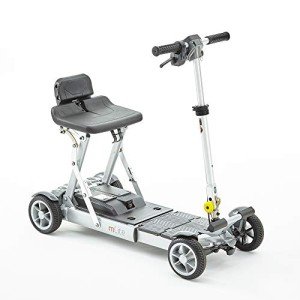Understanding Mobility Devices: Enhancing Independence and Quality of Life
In today's hectic world, the desire for mobility is universal. However, specific medical conditions or age-related challenges can hinder motion, leading to an ongoing search for support. Mobility devices work as important tools to improve independence, enhance quality of life, and make it possible for people to engage totally in their communities. This post offers a detailed overview of mobility devices, including their types, features, choice requirements, and more.
Kinds Of Mobility Devices
Mobility devices vary from easy aids to complicated devices, customized to satisfy different needs. Below is a table summarizing common kinds of mobility devices:
| Type of Device | Description | Perfect For |
|---|---|---|
| Walkers | Four-legged support devices that offer exceptional stability while strolling. | People requiring extra support. |
| Canes | Single or three-legged sticks that improve balance and support walking. | Those with slight mobility troubles. |
| Wheelchairs | Seats installed on wheels, offered in handbook and electric versions. | Individuals with restricted or no mobility. |
| Scooters | Electric cars developed for outdoor usage and ease of navigation. | Those who can't stroll fars away. |
| Crutches | Devices that help people move weight far from a hurt leg. | Individuals recovering from leg injuries. |
| Rollators | Walkers with wheels, seats, and brakes for boosted mobility. | Users needing rest options while strolling. |
| Lift Chairs | Reclining chairs that help users in standing up and taking a seat. | Seniors or those with mobility constraints. |
| Mobility Scooters | Small electric automobiles for limited mobility, frequently used outdoors. | Individuals needing support over long ranges. |
Key Features of Mobility Devices
When selecting a mobility device, several key functions ought to be considered to make sure optimum performance and ease of use:
- Weight Capacity: Understanding the device's weight restriction is crucial for safety and effectiveness.
- Adjustability: Devices ought to be adjustable in height and width to fit the user conveniently.
- Mobility: Lightweight and foldable alternatives are essential for users who travel or need transport.
- Stability and Safety: Look for features like anti-tip wheels and tough structures to boost security.
- Relieve of Use: Simple mechanisms and user-friendly styles can make a substantial difference in day-to-day use.
- Convenience: Ergonomic styles and padded seats can improve the user experience.
Choosing the Right Mobility Device
Picking the best mobility gadget can be a challenging task. Here are some steps to direct the decision-making procedure:
- Assess Needs: Evaluate the individual's mobility obstacles and daily activities.
- Consult a Professional: Engage healthcare specialists who can offer suggestions based upon the individual's physical condition.
- Trial Options: If possible, trial different devices to identify convenience and functionality.
- Review Budget: Consider the cost of the device, consisting of any extra functions or modifications needed.
- Research Options: Determine the very best brands and models by reading reviews and comparisons.
Table: Comparative Analysis of Popular Mobility Devices
| Device | Benefits | Disadvantages |
|---|---|---|
| Walkers | Excellent stability, promotes strolling. | Large, may limit movement in small areas. |
| Canes | Lightweight, improves balance. | May not provide enough support for extreme mobility concerns. |
| Wheelchairs | Perfect for those with substantial mobility restrictions. | Can be cumbersome, particularly in indoor environments. |
| Scooters | Great for outdoor usage, simple to maneuver. | Minimal indoor use, much heavier. |
| Rollators | Supplies rest option, easy to move. | May need more area than traditional walkers. |
| Lift Chairs | Comfortable, assists transition from sitting to standing. | More costly, larger footprint. |
Frequently Asked Questions (FAQs)
1. What is a mobility device?
A mobility device is any tool developed to assist individuals in moving and navigating their environment. This consists of walkers, wheelchairs, scooters, and crutches.
2. How do I know which mobility gadget is best for me?
Consider your specific mobility difficulties, physical capabilities, and way of life needs. Consulting with healthcare professionals can also offer customized recommendations.
3. Are mobility devices covered by insurance coverage?
Numerous insurance coverage strategies, consisting of Medicare, might cover specific mobility devices. It's crucial to consult your insurance coverage supplier for specific protection information.
4. Can folding mobility scooters with remote control rent a mobility gadget instead of purchasing one?
Yes, numerous medical supply shops and drug stores offer leasings for mobility devices. This alternative is useful for individuals with short-lived mobility issues.
5. How can I keep my mobility gadget?
Routine upkeep is crucial. It includes cleaning up the gadget, examining for wear and tear, and guaranteeing all parts are functioning properly.
The Impact of Mobility Devices on Quality of Life
Mobility devices considerably enhance the quality of life for individuals with limited mobility. They foster independence, motivate social interaction, and improve access to necessary services and leisure activities.
- Increased Independence: Users can browse their areas, participate in events, and participate in pastimes without counting on others.
- Social Engagement: Mobility devices help with participation in social events, thereby combating feelings of seclusion.
- Boosted Safety: Devices provide stability and reduce the risk of falls, promoting user self-confidence.
Mobility devices are more than simply tools for movement; they are entrances to self-reliance and quality living. By understanding the different kinds of mobility aids readily available, their key features, and factors to consider for choosing the right device, individuals can make educated decisions about their mobility needs. Eventually, the ideal mobility gadget can result in a more active, fulfilling life. Whether it's a walker, wheelchair, or scooter, the best choice contributes substantially to improving the mobility and independence of users.

